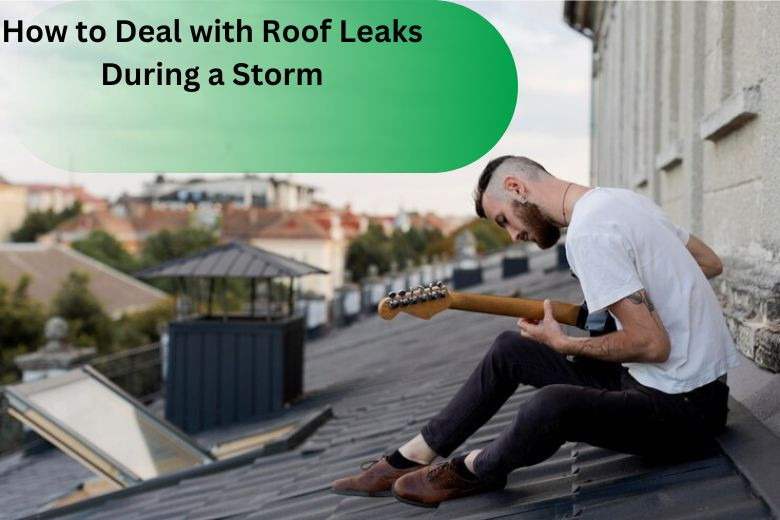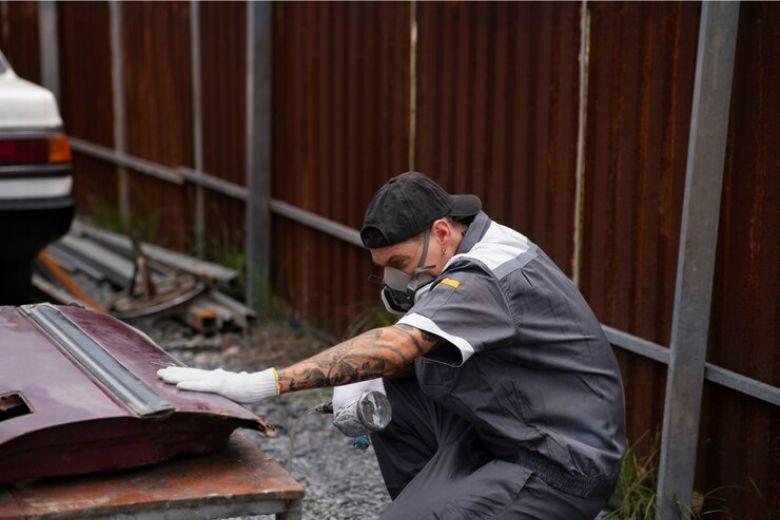How to Deal with Roof Leaks During a Storm
Posted on September 09, 2024 by Admin

How to Deal with Roof Leaks During a Storm
A leaking roof is arguably the last thing any homeowner would be ready to handle during a storm. The rain, wind and even flying debris if there are will be among the causes of roofing leaks which, if let to perform to their prime, will result in severe damage to the interior structure. When there is a rainstorm, one needs to know how to deal with roof leaks in order to help protect against possible damage, since it might result in very expensive repairs. This guide will help you walk through the practical steps to be taken when dealing with a roof leak during a storm and the things that you will have to do until the weather is clear.
Immediate Actions to be Taken with Roof Leaks During a Storm
1. Safety First
Stay safe while you fix a leak on your roof in a storm. Do not get on the roof in a storm. Try to keep the situation under control from inside the house. Use a ladder that is set firmly and do not put up a ladder in the rain. No standing in water. No using electricity around a leak, to prevent being shocked.
2. Contain the Leak
Take the following measures to minimize water damage in the house:
Place buckets or other available containers under the leaking place to catch the leaking water.
Spread other towels, plastic sheeting, or old blankets to absorb any moisture and keep it off the floor and furniture.
Remove valuable items from the leaking area to stop more ruin.
3. Identify the Source
While this is all occurring, try to find out the leak. Look up at your ceilings and walls, see if there are damp spots, stains, or molds. That will give you an origin of where the water is coming in and this will also be, in itself, a way for you to let the repair professionals know exactly what your problem is so they can fix it faster.
4. Apply Temporary Repairs
If conditions allow, effect temporary repairs to halt additional water infiltration. Holes in the roof, from which the roof may have been torn off by the wind or the roof is gone, should be covered with waterproof tarps or plastic sheeting. On such a tarp, make sure the tarp is tightly sealed with weights or adhesives, secured from blowing away due to the wind, and is preventing further infiltration of water.

Post-Storm Actions to Roof Leaks
1. Inspect Your Roof
Look for miss-integrity and torn shingles, broken flashing, and other debris that may have caused the leak. Once the storm and danger have passed, inspect your roof for damage. Document photos of the damage are helpful not only by insurance claims, but also in guiding any pros you might bring in for repairs.
2. Check the Interior for Damages
Take a look around the interior of your house for any potential structural damage caused by leaky roofs. This can include sagging ceilings, discolored insulation, or the growth of mold. Repairing these structures in due time further eliminates potential damage of property and prevents health issues.
3. Contact a Professional Roofer
Most of these leaks in a roof, even during a furious storm, will be fixed by professional attention. Contact a licensed roofer to inspect the problem and show you a written detailed plan of the repairs. They have the knowledge and equipment to repair complicated problems and, in short, get your roof back into working order.
4. File an Insurance Claim
As the case of vast damages back sends a claim to your insurance company for repair coverage. Your insurance company needs proper documentation of the damage. Provide the insurance company with photos and repair estimates of the damage. Do cooperate with your adjuster for smooth running.
Prevention of a Future Roof Leak
1. Regular Maintenance
Prevent roof leaks in a storm by maintaining the roof regularly. Inspections by a professional roofer at least once a year should be allowed so that minor issues, causes of a roof leak, are addressed in time before they emerge into big problems. Gutters and downpipes may also need to be checked frequently and cleaned to ensure that the flow of water is smooth and not blocked.
2. Improving Roofing Materials
Consider some of the more durable roofing materials that are more resistant together: impact-resistant shingles and reinforced flashing around chimneys and skylights, both of which could help your roof survive high winds.
3. Improve Drainage
Ensure that the roof has good drainage. Clean your gutters and downspouts of leaves, gravel, and other stuff that will cause the water to back-up under your roof and eventually inflict damage to your walls or foundation. Ensure that rainwater is siphoned a number of feet away from the base of your house.
Also Read :
DIY Roof Repair: When to Try It Yourself and When to Call a Professional
The Benefits of Greywater Recycling Systems
How to Handle Plumbing Issues During a Home Renovation
How to Plan a Whole-House Plumbing Repipe
Faqs
-
1. What should I do immediately if water starts leaking through the roof during a storm?
First, take safety measures by staying off the roof if the weather is bad. If possible, indoors, use buckets to collect drips, towels or plastic sheeting to absorb moisture, and move valuable items away from the leak. Locate the source of the leak and apply temporary patching if possible.
-
2. How do I fix a roof leak temporarily during a storm?
Follow these simple steps to temporarily seal a leaking roof using waterproof tarps or plastic sheeting. Fasten the tarp to the roof with weights or adhesives to ensure that the tarp is covering the whole leak, thereby preventing more water from entering.
-
3. How do I stop further leakage in my roof after fixing what's wrong?
Avoid future leakage of the roof by having the roof regularly maintained, upgrading to harder and more durable roofing materials, and making a few improvements on better roof drainage. One can also ensure that there is no leakage from the roofs by periodically inspecting the gutters and downspouts and cleaning them.
Recent Post
- Top Plumbing Service Providers in Arizona, USA
- Top 10 Electrician Service Providers in Alabama, USA
- Top 20 Roof Repair Service Providers in Alabama, USA
- The Role of Roof Insulation in Energy Efficiency: Tips and Tricks
- Understanding Roof Damage from Wildlife and How to Prevent It
- How to Choose the Best Roofing Contractor for Emergency Repairs
- Roofing Maintenance for Historic Homes: Preserving Architectural Integrity
- The Importance of Proper Attic Ventilation for Roof Health
- How to Identify and Prevent Roof Mold and Mildew
- The Best Practices for Removing Snow from Your Roof